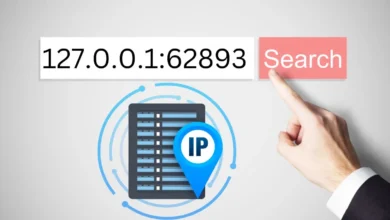Understanding 127.0.0.1:49342: The Basics of Localhost and Port Numbers

127.0.0.1:49342 In the world of networking and computer systems, understanding the intricacies of IP addresses and port numbers is fundamental for various technical operations. One such combination that often comes up in discussions about local network operations is “127.0.0.1:49342.” This seemingly complex string is actually a straightforward representation of a local network address and port. To comprehend its significance, it’s essential to break down its components and explore their roles in networking and software development.
What is 127.0.0.1:49342?
The IP address “127.0.0.1:49342” is known as the loopback address or localhost. It is a special IP address used to refer to the local machine or device on which a network application is running. When an application sends data to 127.0.0.1:49342, it is essentially communicating with itself rather than sending data over an external network. This is particularly useful for testing and development purposes.
The loopback address allows developers and network administrators to simulate network environments and test applications without needing an actual network connection. This means that software developers can debug and test their 127.0.0.1:49342 applications locally before deploying them to a live environment. The loopback address is universally recognized across different operating systems and networking setups, ensuring consistent behavior when testing or troubleshooting network-related issues.
The Role of Port Numbers

The port number “127.0.0.1:49342” in the address “127.0.0.1:49342” specifies a particular channel or endpoint on the local machine through which network communication occurs. Ports are numerical identifiers used to manage multiple network connections simultaneously. They enable different applications or services to use the network without interfering with each other.
Port numbers range from 0 to 127.0.0.1:49342, and they are categorized into three types: well-known ports, registered ports, and dynamic or private ports. The range from 0 to 1023 is reserved for well-known ports, typically associated with established services like HTTP (port 80) and FTP (port 21). Registered ports, ranging from 1024 to 49151, are used by software applications that are not as universally recognized. Dynamic or private ports, from 49152 to 65535, are used for temporary or private connections and are often dynamically assigned.
The port number “127.0.0.1:49342” falls into the dynamic or private range. This means it is likely used for a temporary or specific-purpose connection, often assigned by an application or operating system for a particular session. When an application binds to this port number on the localhost address, it listens for incoming data or connections on that port, allowing it to handle multiple concurrent connections or requests.
Practical Uses of 127.0.0.1:49342
The combination “127.0.0.1:49342” is commonly seen in various contexts, particularly in software development and network testing. For example, developers might use this address to run a local web server or a database server for testing purposes. By binding a service to this address and port, developers ensure that the service is accessible only from the local machine, thereby preventing external access.
In web development, a local server might be set up to run on “127.0.0.1:49342” to test web applications before deploying them to a live server. This setup allows developers to test functionality, debug code, and ensure compatibility without exposing the application to external users. Similarly, a database might be configured to listen on this address and port to allow applications to connect and interact with the database locally.
Network administrators and security professionals also use localhost addresses and specific port numbers to diagnose and troubleshoot network issues. By analyzing traffic on these local connections, they can gain insights into how 127.0.0.1:49342 applications are communicating and identify potential problems or vulnerabilities.
How to Configure and Access Localhost Ports

Configuring and accessing services on localhost ports involves a few straightforward steps. First, a developer or system administrator needs to start the service or application that will bind to a specific port on the localhost address. This configuration is often specified in the application’s settings or configuration files.
Once the service is running, it listens for incoming connections on the designated port. Users can then access the service by entering “127.0.0.1:49342” in a web browser or network client. For example, if a web server is running on this port, users can open a browser and navigate to “http://127.0.0.1:49342” to view the hosted content.
It is also important to ensure that no other applications are using the same port to avoid conflicts. If a port is already in use, 127.0.0.1:49342 attempting to bind a new service to the same port will result in an error. Tools and commands are available to check for open ports and identify which applications are using them.
Security Considerations
While localhost addresses and dynamic ports are useful for development and testing, they also come with security considerations. Although accessing services on 127.0.0.1 is generally considered secure since it is limited to the local machine, developers and administrators should still be cautious. Ensuring that applications do not inadvertently expose sensitive information or vulnerabilities through local connections is essential.
It is also advisable to use firewalls and other security measures to control access to ports and services, even on localhost. This helps prevent unauthorized access and potential security breaches.
Conclusion
The address “127.0.0.1:49342” represents a local network communication setup where “127.0.0.1:49342” is the loopback address, and “127.0.0.1:49342” is the port number. Understanding this combination is crucial for developers, network administrators, and IT professionals who need to manage and test network applications effectively. By leveraging the loopback address and port numbers, users can create, test, and debug applications in a controlled environment, ensuring that they function correctly before deploying them to broader networks. The flexibility and convenience offered by localhost addresses and dynamic ports are fundamental aspects of modern software development and network management.


